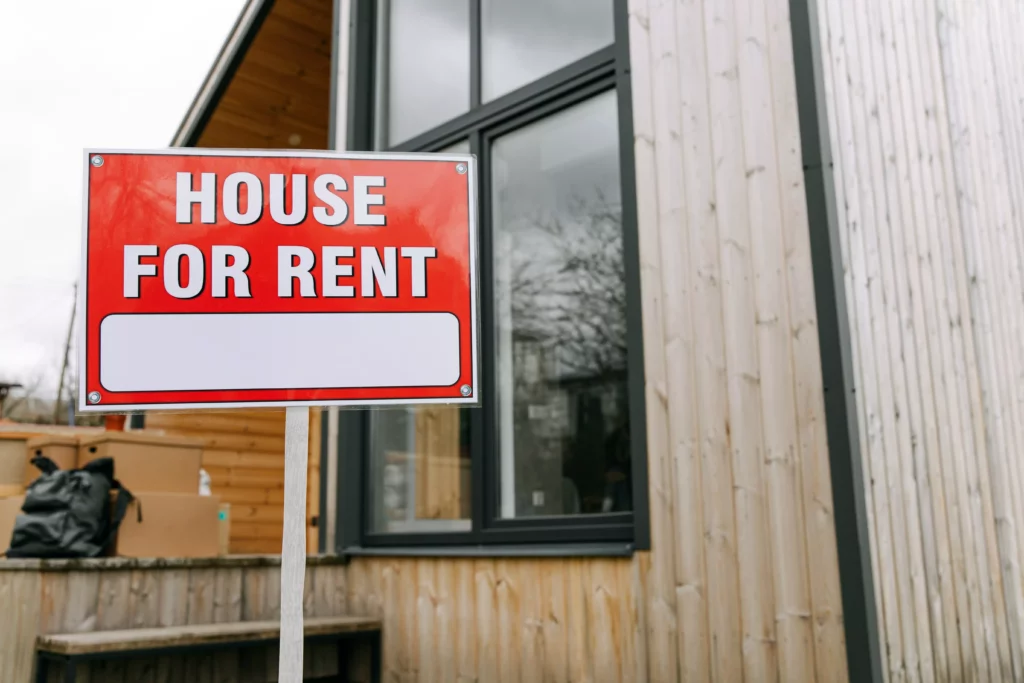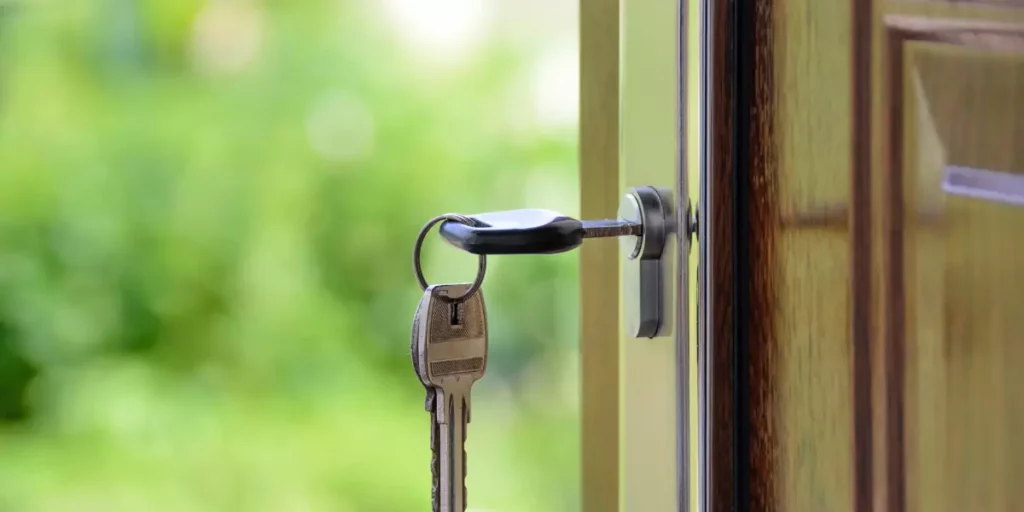When you start looking for investment opportunities, there are many choices, including stocks, bonds, exchange-traded funds, mutual funds, and real estate. Investing in real estate helps diversify your investment portfolio because it does not typically correlate with the stock market, and home prices tend to be less volatile than securities. Additionally, you can buy property by paying a relatively small portion of the total cost upfront and paying off the balance (plus interest) over time. This can make it easier to start investing in real estate.
In this article, you’ll learn more about investing in property, including the 15 best strategies for real estate investing.

Understanding the real estate market
Real estate is typically considered a sound investment because, historically, house prices tend to increase, and the size of the market makes it attractive and lucrative for investors. But before you start investing, it’s crucial to understand the real estate market in order to determine what’s a good investment.
You can ask a real estate agent to do a market analysis for you, but you don’t necessarily need to. Instead, you can look at historical data, demographics, interest rates, the economy, and government policies to better understand the real estate market.
- Historical data will show you how much properties typically sell or rent for and the types of properties potential renters prefer.
- Demographics describe an area’s population composition, including age, race, gender, income, migration patterns, and population growth. This information affects how properties are priced and what’s in demand.
- Interest rates are important to know if you plan on buying properties with a mortgage. But they can also greatly influence whether you can sell the property in the future. As interest rates rise, monthly mortgage payments also increase, which can lower the demand and prices of real estate property.
- Broadly speaking, the health of the economy affects the real estate market. For example, if the economy is sluggish, then the real estate market will also be slow. You can determine the economy’s health by looking at the gross domestic product (GDP), employment data, manufacturing activity, and the prices of everyday goods.
- Government policies and legislation can also have a sizable impact on demand and prices for properties. For example, the government can temporarily boost real estate demand through tax credits, deductions, and subsidies.
Types of real estate investments
There are many different kinds of real estate you can invest in, including
- Raw land,
- Developed properties,
- Residential real estate,
- Commercial properties,
- Single-family homes, and
- Multi-family homes.
Raw land versus developed properties
Raw land is a property with nothing on it, including buildings, paths, and crops. Many investors purchase raw land for future commercial or residential development or to lease their properties to farmers for agricultural use. Although raw land tends to be cheaper than developed properties to invest in initially, it’s often best suited for investors with access to a large amount of capital and a deep knowledge of real estate.
Developed property is land that has been improved in some way, such as by adding a building or by preparing it for agricultural use.
Residential versus commercial real estate
Residential real estate is any property used for residential purposes. This type of property includes single-family homes, condos, co-ops, duplexes, townhouses, and multi-family residences. If you plan to invest in residential real estate, you can make money by collecting rent from tenants or through the property’s appreciated value when you sell it.
Commercial properties are used exclusively for business purposes. They include gas stations, grocery stores, hospitals, office buildings, hotels, parking facilities, shopping centers, warehouses, and more. Leases for commercial properties tend to be longer than residential real estate, and property owners can often command higher rents. Because of this, investing in commercial properties can lead to higher, steadier long-term income. But, it may require you to put down large down payments and account for significant property management expenses.
Single-family homes vs. multi-family homes
Single-family homes are set up to accommodate just one family. They often do not share walls with other structures and typically only have one kitchen and a single set of utilities. Single-family homes include ranch houses, split-level homes, manufactured houses, bungalows, and townhouses. Investing in single-family residences typically requires lower down payments and offers favorable interest rates. This makes it easier to invest in real estate and diversify across multiple geographic areas.
Multi-family residences are residential dwellings that include more than one living unit, allowing several families to live independently under the same roof. Each unit has its own entrance, kitchen, utilities, and address. Multi-family homes include duplexes, triplexes, fourplexes, apartment buildings, condos, co-ops, age-restricted properties, and assisted living centers.
Unlike single-family homes, the valuation of a multi-family residential property is based on the income generated instead of the opinion of a third-party appraiser. If you invest in multi-family properties, you can often expense depreciation. You can also defer capital gains when you sell the property by reinvesting in another similar property (using IRC Section 1031). However, it can be difficult to start investing in multi-family homes, and there is an increased risk compared to investing in single-family residences.
The best strategies for real estate investment
There are many different real estate investment strategies, and the strategy you choose depends on your risk tolerance, the amount of control you want over the property, your experience, how much cash you have for a down payment, and the level of cash flow you would prefer.
To help you decide how to start investing in real estate, we’ve compiled a list of the best investment strategies to consider. You may choose one or multiple, and the strategies you adopt will likely change over time.
1. Purchasing single-family rental properties
Single-family rental properties are excellent assets to own because of the gradual price appreciation, available tax incentives, and ability to take out a fixed-rate mortgage. When you purchase a single-family home to rent out, you can use the rental income to help cover the mortgage payments and build equity.
2. BRRRR: Buy, rehab, rent, refinance, repeat
This is a popular long-term real estate investment strategy that involves the following process:
- Buy: You will purchase a property, ideally at below-market value.
- Rehab: Then, you’ll renovate and improve the property to add value.
- Rent: Once the property has been renovated, you can rent it out for a price that will cover the mortgage payments.
- Refinance: Then, you’ll have the property reappraised and use a cash-out refinance to gain access to more capital.
- Repeat: You will then use that capital to invest in more properties and repeat the process.
This potentially lucrative strategy allows you to build a large portfolio of passive investment properties, but it’s not often recommended for novice investors. That’s because it is quite labor-intensive initially and requires you to be able to identify great deals.
3. Short-term buy-and-hold rentals
This real estate investment strategy involves buying rental properties to sell after a short period of time, such as one to five years. Investors often purchase these rental properties and force the property to appreciate through remodeling, raising the rent, or decreasing expenses. This strategy tends to work well when purchasing multi-unit apartment complexes or properties in high-priced, appreciated markets.
4. Long-term buy-and-hold rentals
With a long-term buy-and-hold rental strategy, you purchase real estate with the intention of keeping it for a long time. This slow and steady strategy is typically successful and allows you to collect rental income, expense depreciation, and realize increased property values.
5. The trade-up plan
This investment strategy allows you to build real estate wealth and income fairly quickly. It involves repeatedly moving from a smaller to a larger property and avoiding capital gains taxes using IRC Section 1031.
6. BURL: Buy utility, rent luxury
If you currently own a relatively luxurious home but could live in a more practical home, then you may pursue this strategy. Purchase a more utilitarian home to live in, then rent out the luxurious house, which could potentially demand rental prices that are significantly higher than your mortgage payments.

7. House hacking
House hacking involves buying and living in a property while renting out part of it. This allows you to use rental income to cover part or all of your monthly mortgage payments and reduce other housing costs, although you can use the rental income however you like. For example, you may use that money to start saving for your next investment property to expand your portfolio.
With house hacking, you would have access to residential mortgage rates, which typically have lower interest rates and require smaller down payments than investment mortgages. And you can purchase any type of residential property you like, but house hacking is particularly well-suited for duplexes, triplexes, fourplexes, or homes with separate rentable spaces, such as a basement or guest house.
8. Live-in-then-rent
This strategy involves purchasing a home that you will live in initially and turning it into a rental after moving out. Unlike with house hacking, you will not live in the home at the same time as your tenant.
9. Rental debt snowballing
Rental debt snowballing is a strategy for eventually owning multiple rental properties free and clear with no debt. Start by purchasing multiple properties with low-interest rate mortgages. Then, you will combine savings and income from your job and rental properties and use the available cash to pay off the property with the lowest balance early. You will then continue the process until all your properties are paid off.
One of the advantages of this strategy is that it’s flexible. If you hit a temporary financial roadblock, you can make only the minimum mortgage payments for as long as needed.
10. Flipping properties
Flipping a house involves purchasing a property (ideally at below-market value), renovating it to increase its value, and selling it for a profit. The strategy works best if you can renovate and sell the property as quickly as possible because you are responsible for the mortgage payments until the home is sold.
Successful property flippers have a system in place to facilitate a quick turnaround. They’ll often have access to affordable materials, a crew that provides high-quality work at a reasonable rate, and a real estate agent who can sell the home quickly.
One of the disadvantages of flipping homes is that you will have subject to capital gains taxes because you will not have held on to the property for at least two years.
11. Live-in flips
One way to avoid high capital gains taxes while flipping homes is through live-in flips. In this strategy, you will live in the house while improving it and then wait two or more years before selling it for a considerable profit.
12. Real estate wholesaling
Real estate wholesaling means finding a property that’s a great deal and facilitating a sale between the buyer and seller. You will then collect the difference between the seller’s price and the amount the buyer pays.
To succeed in real estate wholesaling, you need to excel at marketing and negotiating. You also need to keep up-to-date on what properties are on the market. You can do this by using a multiple listing service (more commonly called MLS) or by utilizing a strategy called “driving for dollars,” which involves manually searching neighborhoods for promising properties.
13. Real estate investment trusts
Real estate investment trusts (REITs) are corporations that own income-producing properties. They act like mutual funds for real estate investors and pay dividends to their shareholders. Purchasing shares of a REIT allows you to invest in real estate without owning physical property.

There are two types of REITs:
- Equity REITs own buildings and other forms of real estate.
- Mortgage REITs provide financing for real estate and may invest in mortgage-backed securities.
REITs are an excellent option for stock market investors who want a regular income. They’re also a great way to begin investing in commercial real estate, like malls and office buildings, which are often more difficult for individuals to purchase directly.
14. Syndication
Syndication involves pooling your money with other accredited investors to buy real estate. This allows you to invest in multiple real estate strategies without necessarily facilitating the purchases yourself because you will pay the syndicators to locate and manage most deals. Then, you’ll benefit from the rental income.
It’s the ideal strategy for anyone who wants to own rental properties without the hassle of managing them because the group collectively manages all units. Because of this, syndication guards against occasional vacancies, so you will receive some income even if a unit is empty.
A version of syndication is crowdfunding. In crowdfunding, investment opportunities are marketed through online platforms like PeerStreet allowing accredited and non-accredited investors to contribute. Crowdfunding is a great way to get started because you are typically expected to contribute less capital than you would with traditional syndication. Generally, you will only need to invest between $1,000 and $5,000.
15. Investing in property tax liens
A tax lien is a legal claim against a property because the owner failed to pay property taxes. When the municipality where the property is located places a tax lien on the property, it issues a certificate specifying the amount owed and an interest rate the lien owner will earn. Many states allow tax lien certificates to be auctioned off.
If you win a certificate through an auction, you would pay the tax bill and earn the right to take ownership of the property through foreclosure or to be paid back (plus interest) when the property owner pays their back taxes. This strategy is an indirect way to invest in real estate.
Conclusion
Whether you plan on generating rental income or want to hold on to real estate until the perfect selling opportunity arises, investing in real estate can be a great way to build a diversified portfolio. As with any investment, though, it’s crucial to understand that the market will have ups and downs.

